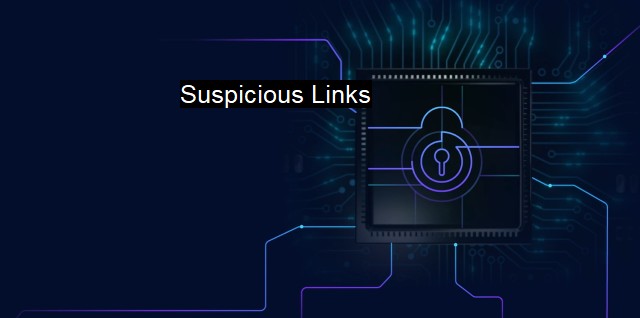What are Suspicious Links?
Navigating Suspicious Links: Protecting Yourself and Your Business against Cyber Threats
Suspicious links refer to untrustworthy URLs or hyperlinks that may compromise a user's data security significantly. These links usually contain certain forms of malware, including viruses, ransomware, or spyware, which eventually allows hackers or cyber malefactors to gain unauthorized access to the systems, impersonate users, steal sensitive data, or carry out fraudulent activities.Primarily, suspicious links circulate through email-based phishing, messages on social networks, or suspicious websites. Their presentation is deceptive and manipulative, appearing genuine with convincing narratives to encourage users to click on them. In cybersecurity terms, this malicious effort is referred to as social engineering trickery. Notably, these links lead to fake landing pages, often mimicking prominent brands, financial institutions, or service providers intending to swindle users. Opening these unverified web payloads could expose tokens or passwords, critical personal citizen data, banking information or even deploy malicious code that could cripple the digital infrastructure of organizations.
Threat actors often use social engineering techniques, crafting persuasive emails or texts, which act as baits. Links embedded in such communications camouflage as reliable resources spreading malware or lead to cloned websites provoking to enter sensitive data. Worse, clicking on such links could indirectly allow unauthorized remote control of devices, impacting both privacy and financial security of an organization or an individual.
One of the intriguing aspects of suspicious links is their complexity and concealment. Malicious links may cleverly hide within legitimate-looking web souvenirs, advertisements, sponsored ad content making it difficult for the lay user to identify them. Often security firms use the term "Obfuscation" describing this camouflaging technique often employed by cybercriminals. It ensures that the true destination of the suspicious link remains hidden until clicked upon, showing no ominous signs, making it a fervent cybersecurity threat.
Suspicious links pose numerous threats to any connected digital system. Besides introducing malicious software capable of wrecking havoc on individual computers, they possess the potency to proliferate across networks. They are capable of hijacking critical controls, freezing assets, facilitating unpermitted cookie tracking, or establishing keyloggers, impinging treacherously on privacy rights.
Netizens unknowingly nurture the lifecycle of viruses once they initiate such malignant payloads strategically hidden within suspicious links, making computers a part of malicious botnets. These 'Zombie computers' circulate phishing spam far and wide, continue DDoS attacks affecting the overall cybersecurity infrastructure significantly.
In order to counter potential threats from suspicious links, software providers offer antivirus software that can inspect and filter camouflage and concealed links by underpinning sophisticated algorithms. Developed using dynamic cybersecurity frameworks, these antivirus software not only detect and quarantine known malware threats but also carry out heuristic checks to identify potentially harmful variations of known malware or entirely new malware, thus offering proactive protection.
Another proactive technique by browsers and search engines employs sandboxing tactics. A sandbox isolifies the speculated potential threat periphery and dissects it in a secured environment preventing its malignant behaviour, thus creating an additional safety net protecting the users and the systems, otherwise vulnerable.
Suspicious link checker tools, available over internet platforms, allows users to verify the legitimacy of the link before opening it. These link checker tools scrutinise the pointed links for known security

Suspicious Links FAQs
What is a suspicious link?
A suspicious link is a hyperlink that may potentially lead the user to a website or web page that is harmful or malicious in nature. It may contain viruses, malware, or phishing scams that can compromise the user's device and personal information.How can I identify a suspicious link?
A suspicious link can be identified by looking for certain warning signs, such as unknown or misleading domain names, broken or misspelled URL addresses, unfamiliar or suspicious email senders, and urgent or suspicious subject lines.What should I do if I receive a suspicious link?
If you receive a suspicious link, do not click on it, and do not forward it to anyone else. Instead, delete the message or email that contains the link and report it to your IT or cybersecurity team.How can I protect myself from suspicious links?
To protect yourself from suspicious links, it is important to practice good cybersecurity habits, such as ensuring that your antivirus software is up-to-date, avoiding clicking on links from unknown or untrusted sources, and being cautious when providing personal information online. Additionally, you may consider using a URL scanner tool or browser extension that can detect and block malicious links.| | A | | | B | | | C | | | D | | | E | | | F | | | G | | | H | | | I | | | J | | | K | | | L | | | M | |
| | N | | | O | | | P | | | Q | | | R | | | S | | | T | | | U | | | V | | | W | | | X | | | Y | | | Z | |
| | 1 | | | 2 | | | 3 | | | 4 | | | 7 | | | 8 | | |||||||